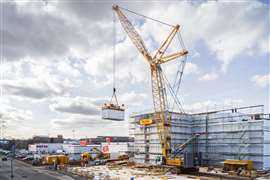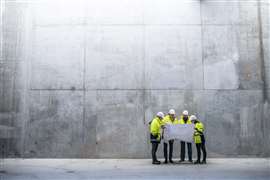Bouncing back
27 February 2008
Late september saw the dowJones Industrial Average break through the 14000 point barrier for the first time in its history. The peak came after the US Federal Reserve cut its key interest rate by -0,5 percentage points to 4,75% on September 18.
It was certainly an impressive rally. Between weeks 34 and 39, the Dow gained +6,43%, leading the way for the mainstream indicators. Of course, what happens on the US markets is often reflected in other parts of the world, and there were good gains for other key indexes.
The Dax was the best of the rest with a +6,17% rise over the same period, while the FTSE 100 was up +5,46%, and both the Nikkei 225 and CAC 40 put on +4,91% gains. There were also spikes in other indexes such as the NASDAQ and S&P 500 in the US, as well as the Shanghai Index in China.
Construction Shares
Unusually, not all parts of the construction sector benefited from this broad rally. Although equipment manufacturers saw good gains in their share prices, the contracting sector was somewhat lacklustre and materials producers' shares fell.
The malaise in the materials sector was fairly widespread throughout September, with only Holcim and Kone seeing their share prices rise between weeks 34 and 39. There were one or two that held their ground with only marginal losses –2bin Heidelberg, Schindler and Schneider Electric for example, but at the same time there were heavy losses for the likes of Cimpor, Italcementi, Wienerberger and Wolseley.
It is difficult to see why the sector has been so disappointing. It suffered more than other parts of the construction industry throughout this summer's troubles, and at 150,31 points at the end of week 39, the CEM Index for the materials sector remains about -5% lower than it was at the start of the year. In contrast, the CET Index for the whole construction industry is more than +12% higher than it was at the start of 2007, despite steep falls in July and August. Similarly, indicators like the Dow (+13%) and the FTSE 100 (+5%) have bounced back from a difficult two months, but the materials sector is definitely the exception to this rule.
The contracting sector has fared a little better than materials producers, and the CEC Index for the segment is up some +6% over the course of the year. It managed a small recovery in September, with a +1,62% net rise between weeks 34 and 39, but this figure disguises a mixed picture.
First, although Peab's apparent -28,57% fall looks alarming, there is a reason. In week 39 the Swedish contractor spun-off its civil engineering business into a separate company, Peab Industri, leading to a commensurate fall in its value. At the same time the company implemented a 2-for-1 stock split.
Apart from Peab, there were a few other big fallers in the sector in September. Eiffage, Sacyr, Taylor Wimpey and YIT all experienced double-digit share price falls.
On the other hand, there were some good gains for the likes of Amec, Bouygues and Hochtief among others, including Vinci, which has the highest capitalisation in the sector. These improvements were enough to more than offset the declines seen for some of the smaller players in the industry
Equipment Gains
In contrast, the construction equipment sector enjoyed a buoyant few weeks all round. Overall the CEE Index for the sector was up +7,91% for the five-week period. In fact, at 271,18 points it is only about -2,5% off the all-time record it achieved in early July.
One of the reasons for the rally is the dominance of US manufacturers in the Index. Large capitalisation companies like Caterpillar and Deere exert a huge influence on the Index – these two companies combined account for more than 25% of the CEE.
It was these companies' gains that drove the Index in September, although there was generally good support across the industry. A few companies saw their stock fall in September – most notably Volvo of the high capitalisation players – and this took some of the steam out of the rally. But on the whole September was a very strong month for the sector.
Currencies
The cut in US interest rates may have been good news for the markets, but it sent the Dollar down to new lows. With an interest rate cut expected by some in the UK before the end of the year, the Euro was the strongest major currency in September.
It rose almost +5% against the Dollar to hit a new high of above US$ 1,42, and it made similar gains against the Yen.
The Euro's climb against the Pound (+2,87%) and Swiss franc (+1,64%) were not as pronounced. Having said that, the movements were sharper than usual for the Euro's change against these currencies, which tend to be less extreme than its swings against the Yen and Dollar.
The picture was different for the other European currencies, with the Euro generally losing ground to the Nordic and Eastern European currencies.
Outlook
September's rally seems to say that the stock markets have got over the panic that this summer's subprime credit crisis caused. Having said that, the credit squeeze is far from over and there is still no clear picture of ultimately how much of a hit the banking community will take.
There may be more bad news to come in the short term, and it also remains to be seen what effect the banking crisis will have on economic growth in general. It will be interesting to see what company's say in their outlooks when third quarter financial results start to be published at the end of the month.
STAY CONNECTED


Receive the information you need when you need it through our world-leading magazines, newsletters and daily briefings.
CONNECT WITH THE TEAM










